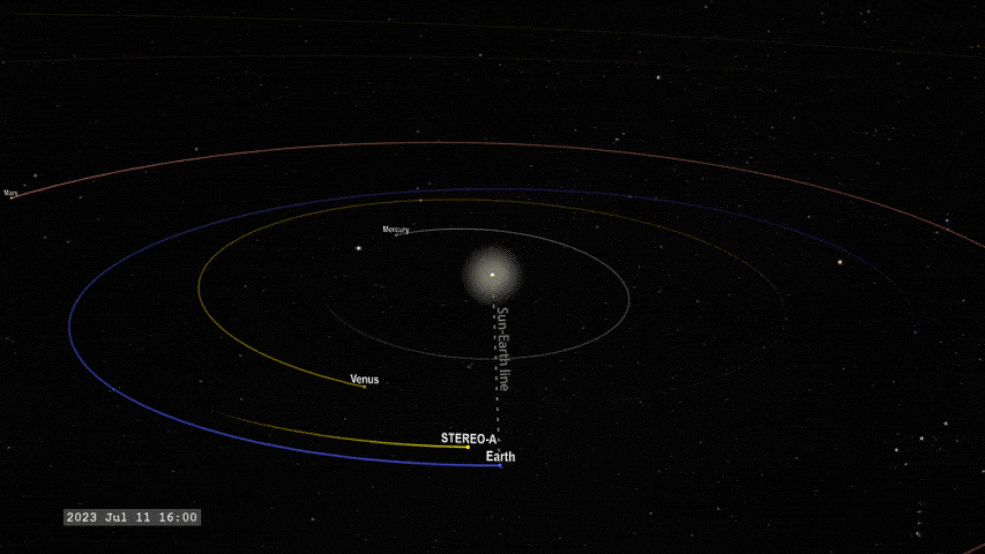STEREO A & B
Solar TErrestrial RElations Observatory

About STEREO
The STEREO mission studies the structure and evolution of solar storms as they emerge from the Sun.
- The twin STEREO spacecraft provided the first-ever 3D views of the Sun's surface and coronal mass ejections.
- The STEREO mission was the first to be able to image solar storms all the way from the Sun to Earth orbit.
- In 2012, STEREO captured data on an extreme solar storm more powerful than anything seen in the past 150 years.
- With its unique point of view, STEREO works with other NASA Heliophysics missions like SDO (the Solar Dynamics Observatory) and SOHO (the Solar and Heliospheric Observatory) to improve space weather forecasts and preparations for space weather impacts.
- The STEREO-A spacecraft remains active. The STEREO-B spacecraft’s mission ended on Oct. 17, 2018.
In Depth
NASA’s STEREO mission launched in 2006 with two spacecraft to study the Sun, its constant outflow of material called the solar wind, and space weather from multiple points of view.
The mission's two spacecraft, known as STEREO-A (for “Ahead”) and STEREO-B (for “Behind”), orbit the Sun, each drifting relative to Earth (by about 20 degrees per year), with STEREO-A having a slightly faster orbit and STEREO-B slightly slower.
The STEREO-B spacecraft has not returned data since 2014 and was decommissioned in 2018. However, the STEREO mission continues to benefit from the unique vantage point of STEREO-A in combination with other spacecraft observing the Sun and heliosphere. Data from STEREO-A is also used to forecast space weather near Earth and throughout the solar system.
The mission’s goals are to:
- Understand massive solar eruptions known as coronal mass ejections (CMEs), including what triggers them, their structure, and the paths they take through the solar system.
- Discover the sources of energetic particles accelerated in the Sun’s atmosphere and by CMEs.
- Improve the understanding of the structure of the ambient solar wind.
Some of STEREO’s major achievements include:
- Providing observations of CMEs, solar wind, and solar energetic particles from multiple points of view to understand their structure and trajectories.
- Giving us the first full, 360-degree view of the Sun and our first views of the far side of the Sun, facing away from Earth.
- Improving predictions of CME arrival time at Earth from side views of the Earth-Sun line.
- Detecting major space weather events throughout the inner solar system.
- Imaging regions of space being sampled by in-situ instrumentation.






































